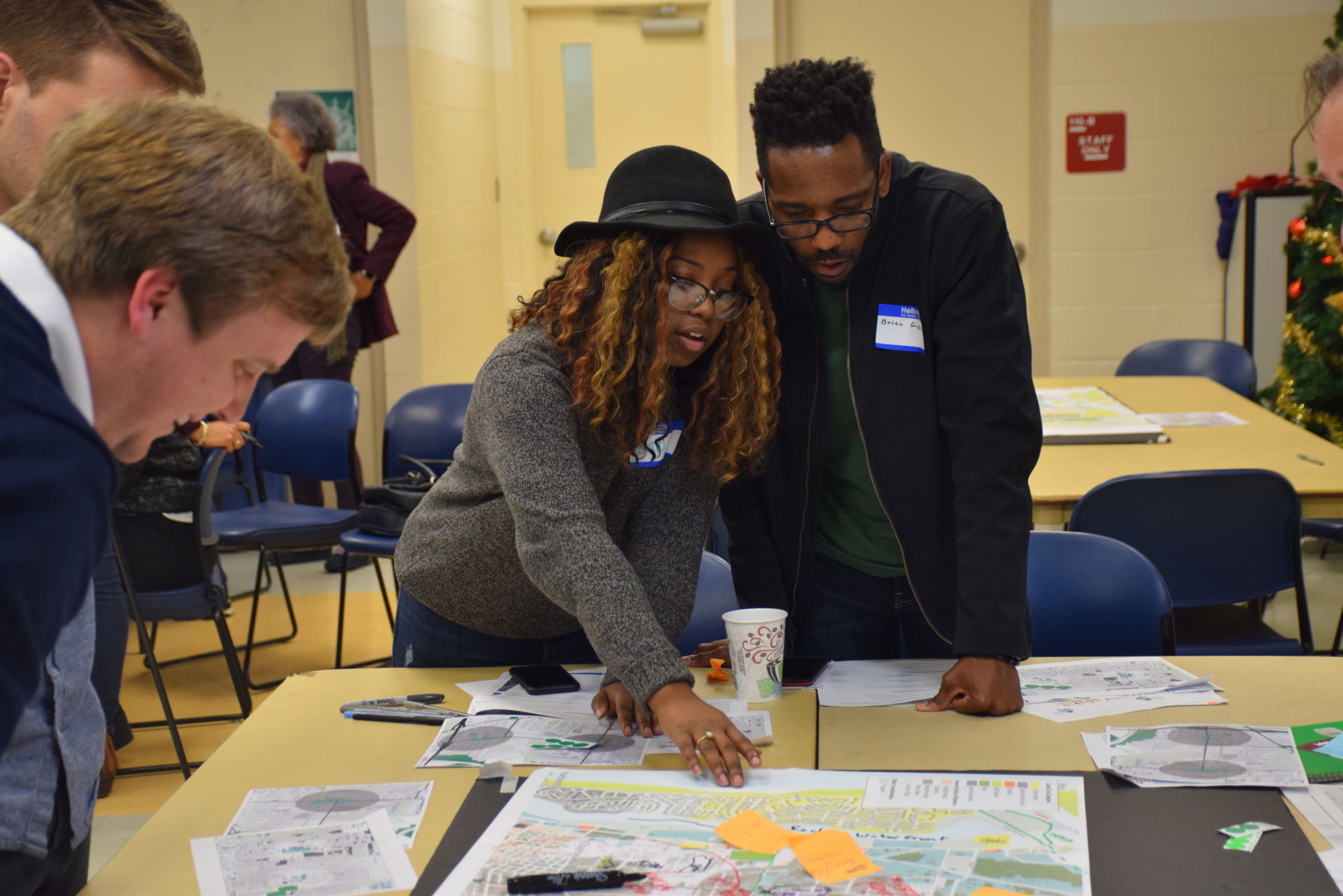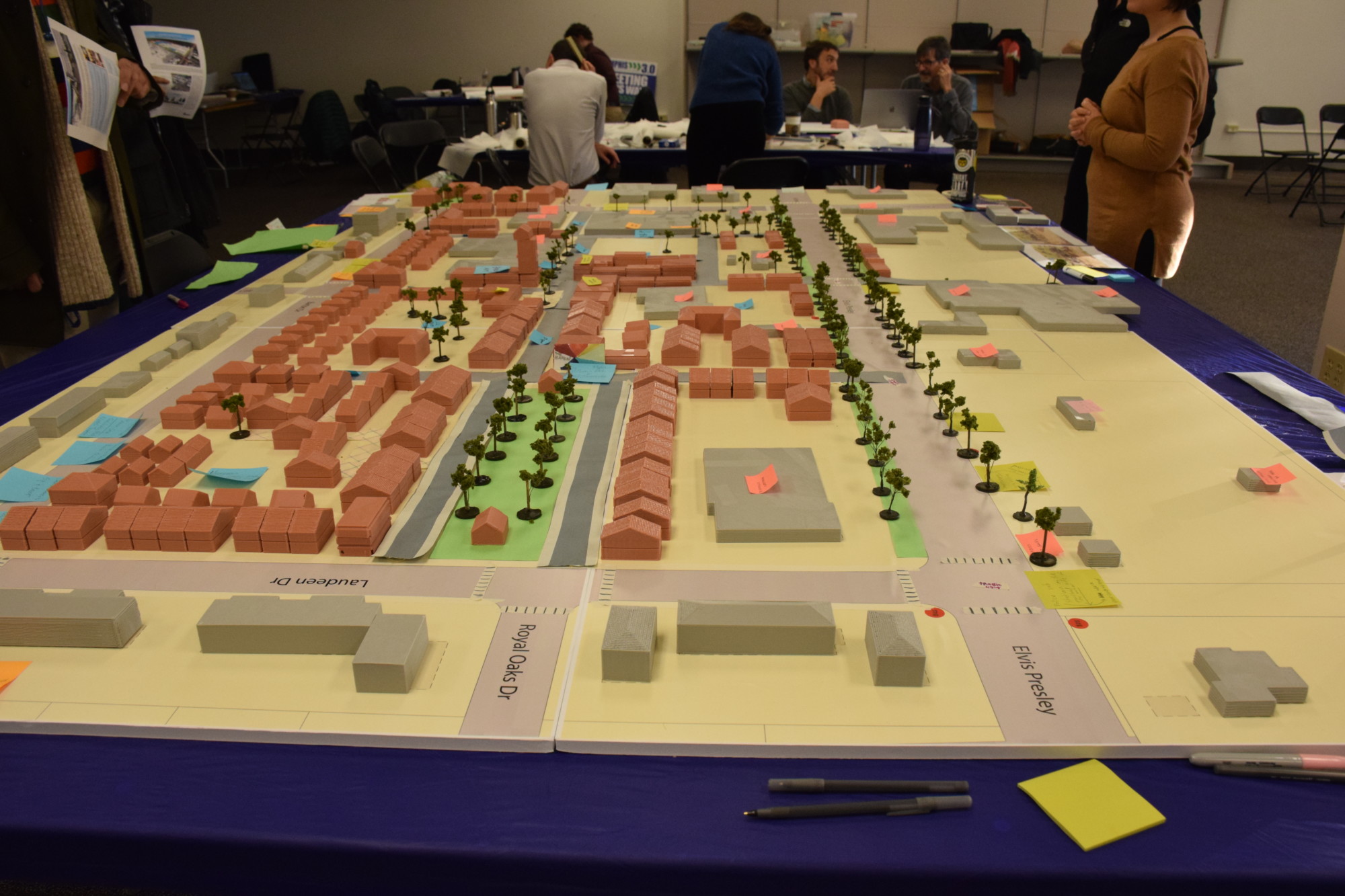A Place-Based Approach to a Comprehensive Plan
Memphis’ award-winning, place-based comprehensive plan corrects for decades of sprawl-promoting policies by focusing investment towards places in Memphis that have the urban “bones” to support the type of walkable, mixed-use, mixed-income communities that Memphians want. These mixed-use places are called “Anchors” because of the stabilizing effect they will have on the neighborhoods that surround them. Most of the anchors identified in the land use map in Memphis 3.0. Providing Place Types in the comprehensive plan that reinforce and support these patterns is a type of “placekeeping” — recognizing the value in places as they exist and providing the policies and resources needed to support them. Many of these places have historically experienced disinvestment as the city prioritized suburban sprawl and separation of uses and discouraged the very qualities that make them good candidates for growth and reinvestment today. Focusing growth and investment in people-centered places is key to Memphis 3.0 – whether its strengthening existing walkable places or providing guidance on how Anchors in auto-oriented places can transform.
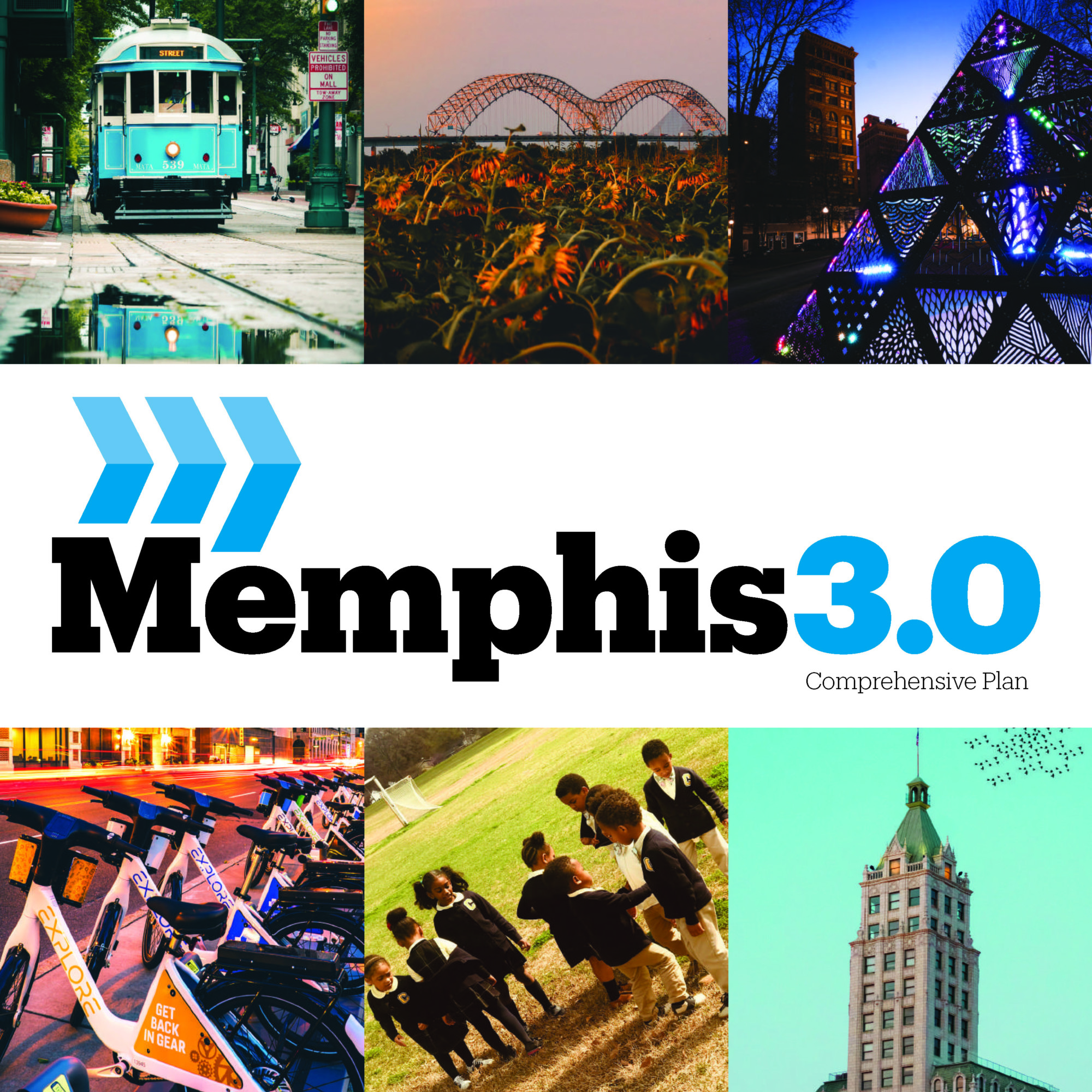
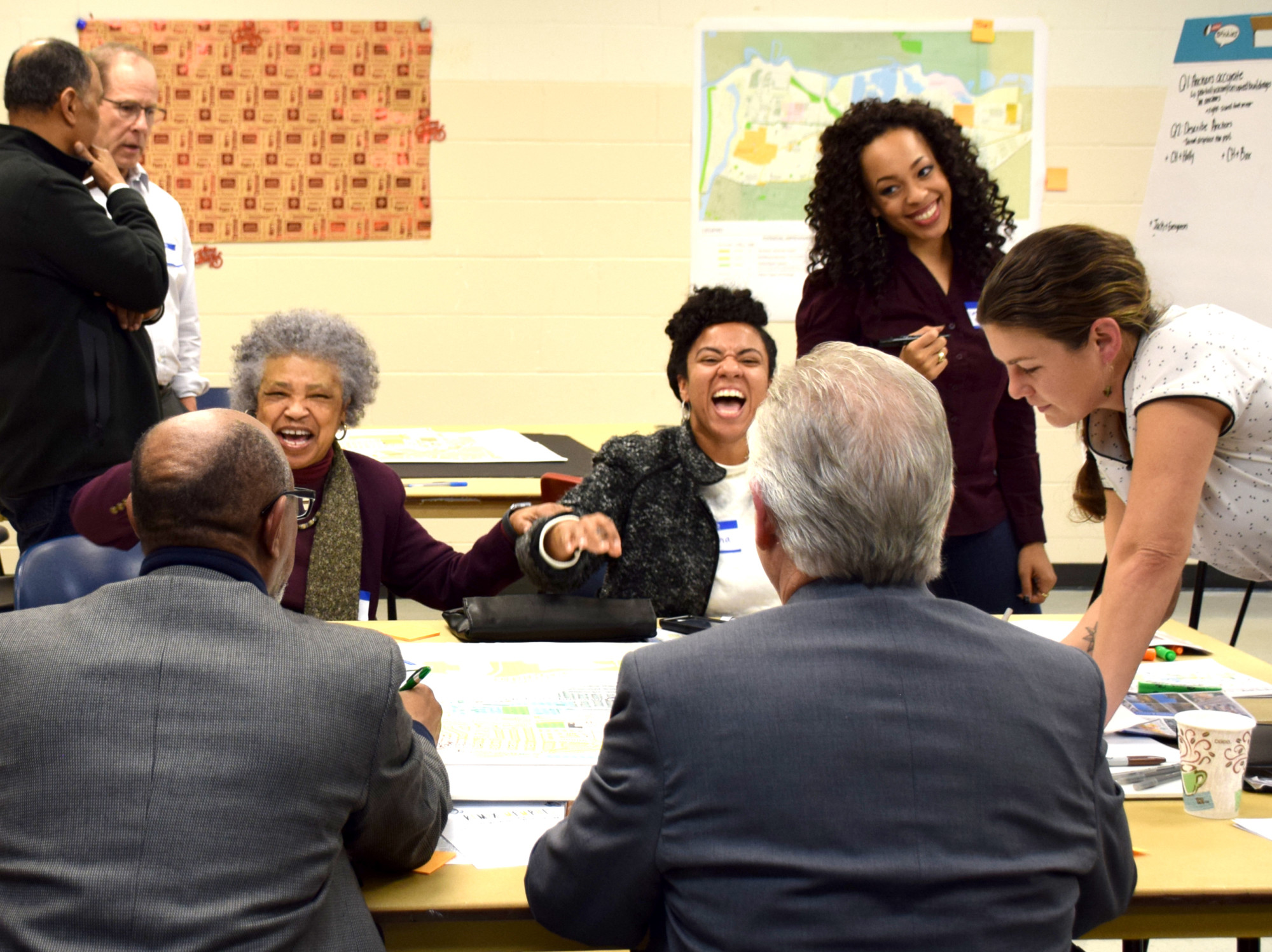
Degree of Change
Across its more than 304 square miles, the City of Memphis is home to a diversity of neighborhoods with different community goals, histories, and economic conditions. A one-size-fits-all approach to change would have failed to capture these nuances, so Opticos developed an approach for envisioning growth and change based on the idea that different places would change in different ways and at different rates based on a variety of factors called “degree of change.” Three categories — Nurture, Sustain, and Accelerate — were developed to organize specific implementation actions that could be taken to calibrate the implementation of the vision of Memphis 3.0 relative to market conditions and community needs in different places within the City. “Nurture” places rely most heavily on public-sector investments to realize the changes envisioned for those places in the Comprehensive Plan, while “Accelerate” places are likely to receive significant interest from private sector developers and require less public-sector investment. By identifying how much change is desirable, in what timeframe, and how it will be funded, the Comprehensive Plan provides a framework for new policies and investments that can be responsive to varied on-the-ground conditions across the city.
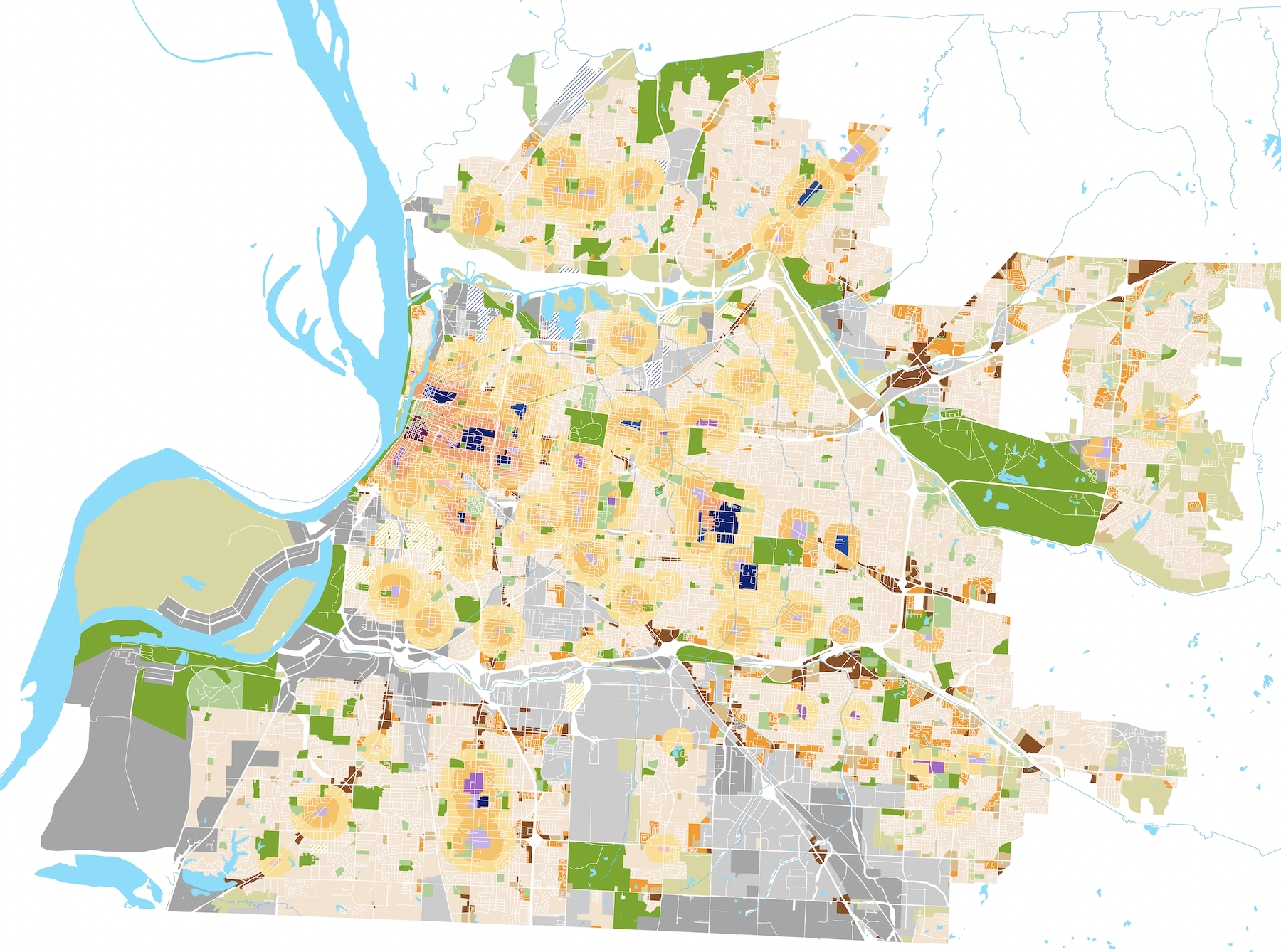
Building Local Capacity
Prior to Memphis 3.0 it had been 40 years since the city had last completed a comprehensive plan to guide development and investment. In 2016 the newly established Office of Comprehensive Planning understood that building staff capacity was crucial to not only the Plan’s drafting and adoption but to its implementation as well. Opticos partnered with Bill Lennertz to develop a community engagement strategy for Memphis 3.0 to effectively involve community members while building staff capacity for future community engagements through trainings and engagement materials. To engage as many Memphians as possible, Opticos worked with Lennertz and the City to develop a “roadshow” that brought a three-day workshop to each of the 14 planning districts in the City. Critical to the execution of this strategy were local planning and architecture consultants, and students from the University of Memphis Design Collaborative program who worked with the City to facilitate the workshops. These local partnerships not only infused the process with local expertise, but also provided an opportunity to build local consultant capacity for planning and community engagement efforts going forward. Lennertz and Opticos provided community engagement training and facilitation and collateral materials specific to each planning district to enable the City and local consultant teams to successfully facilitate the events across the City, engaging with more than 15,000 Memphians about the plan.

Implementation
The City of Memphis has wasted no time in implementing the Memphis 3.0 vision, and Opticos is excited to continue to work with the City and local consultants to support the plan’s implementation. Shortly after approving the Comprehensive Plan, the City engaged Opticos to facilitate design charrettes and create Small Area Plans for two Anchors within the City to demonstrate how Memphis 3.0 would guide area planning and development going forward. Opticos convened a local project team consisting of Memphis-based Bass River Advisors to provide economic analysis and the Memphis office of Alta Planning + Design for conceptual engineering and street design services. The team worked to develop small area plans in the Raleigh and Whitehaven neighborhoods that illustrated opportunities for investment and redevelopment that would support community goals and reinforce the vision of Memphis 3.0. As part of the planning process Opticos facilitated walking tours with the local communities and coordinated design charrettes that included open studios for community participation and 3D printed site models to show how these places could evolve over time to better reflect the communities’ visions for them. In Whitehaven, where the area plan was focused on an existing shopping center, Opticos worked with the property owner to develop feasible solutions to support existing retail tenants while providing opportunities for additional development and open space for the enjoyment of area residents.
Following the Raleigh and Whitehaven Small Area Plans, the City engaged Opticos to take on six small area plans for Anchors designated in the Memphis 3.0 Comprehensive Plan. These small area plans would provide guidance for investing money from a $200 million Accelerate Memphis bond measure to implement Memphis 3.0. These small area plans provide illustrative visions for the six Anchors, specific infrastructure investments that would improve the public realm and catalyze private-sector investments, and an analysis of opportunities for Missing Middle infill housing in surrounding neighborhoods. With Accelerate Memphis funding, the infrastructure investments conceptualized in these plans are already moving forward and will help to attract private-sector investments in these areas by improving the public realm, creating attractive new or revitalized open spaces, and improving streets for the safety and convenience of pedestrians, people riding bikes, and people taking transit. These small area plans show how the vision of Memphis 3.0 can be implemented in Memphis neighborhoods across the City.
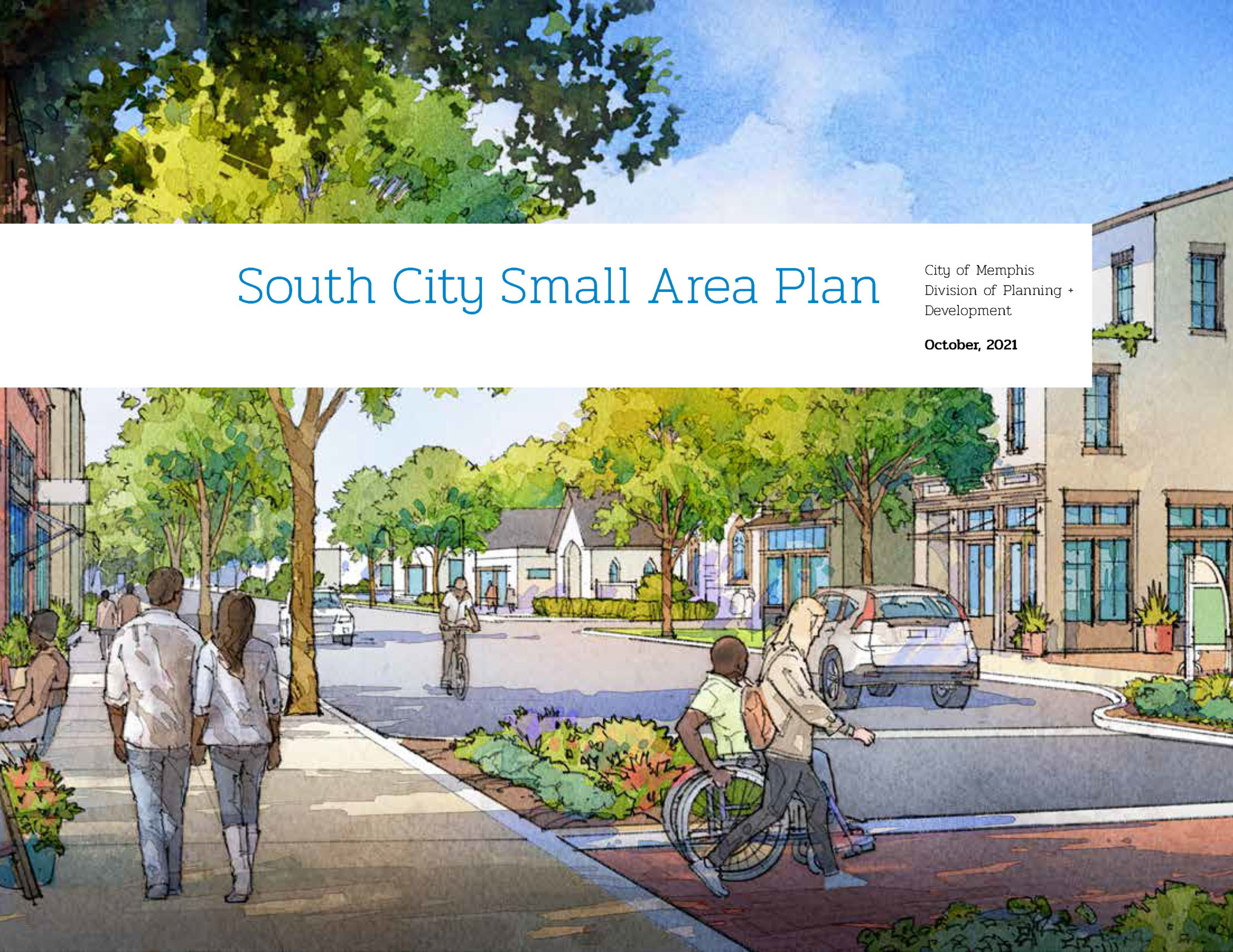
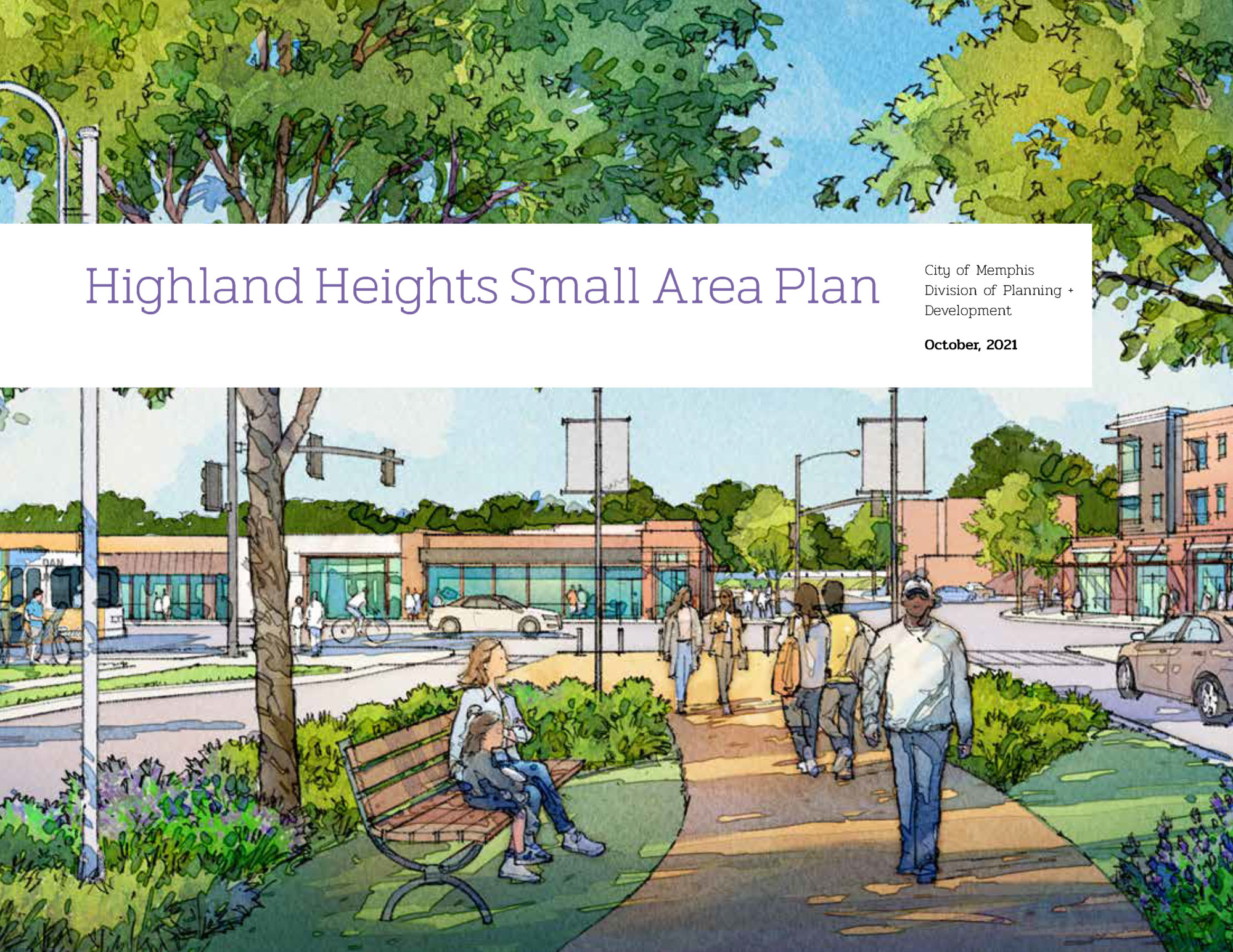
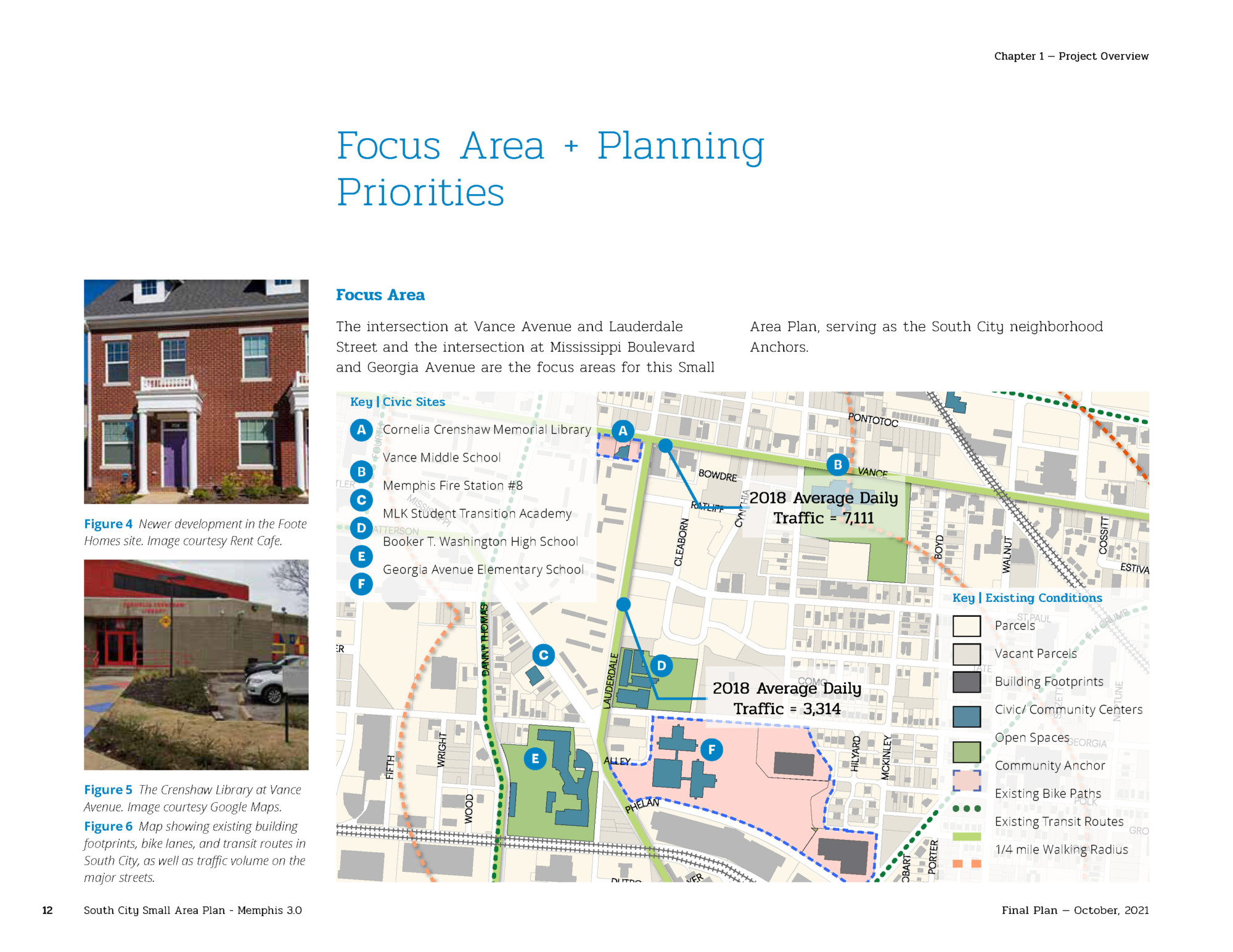
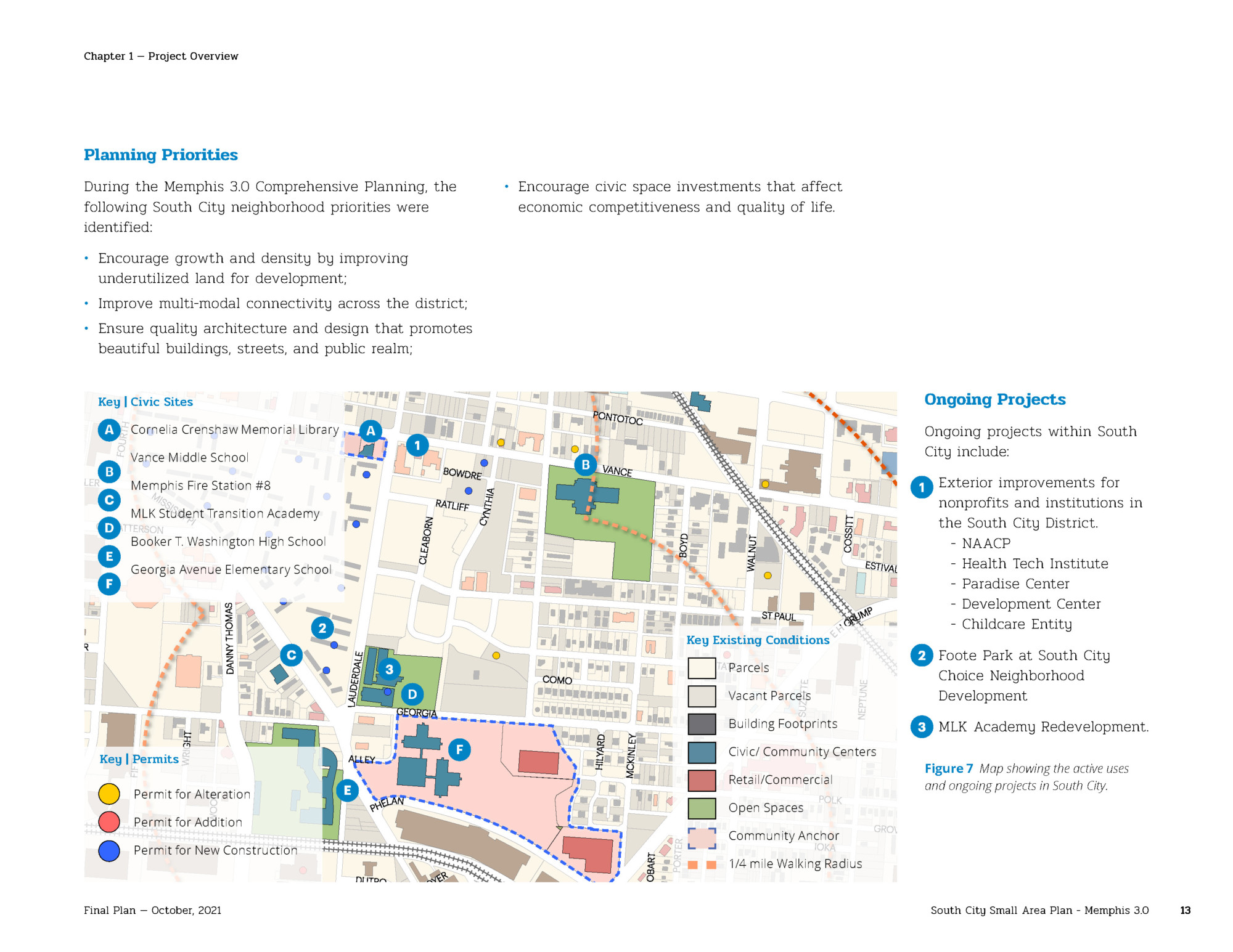
Aligned Vision
The successful adoption and rapid implementation of the Memphis 3.0 Comprehensive Plan is thanks in no small part to the alignment of various City departments, City leaders and decision makers, community organizations and philanthropies, and community leaders across Memphis. City leadership encouraged the creation of a visionary document and has prioritized its implementation with political support and funding for planning and implementation. City staff used the creation of the Comprehensive Plan as an opportunity to build community support through significant, ongoing engagement of neighborhood groups, community organizations, schools, churches, and local philanthropies. These relationships have provided a strong foundation for implementation activities such as the various small area plans described above. With initial relationships between Office of Comprehensive Planning and the community established during 3.0, community engagement during small area planning efforts has been able to forge even deeper connections and focus on implementation. Cooperation and alignment of values between City departments has also helped to streamline planning and implementation by reducing the time spent getting departmental buy-in for the Comprehensive Plan vision.
